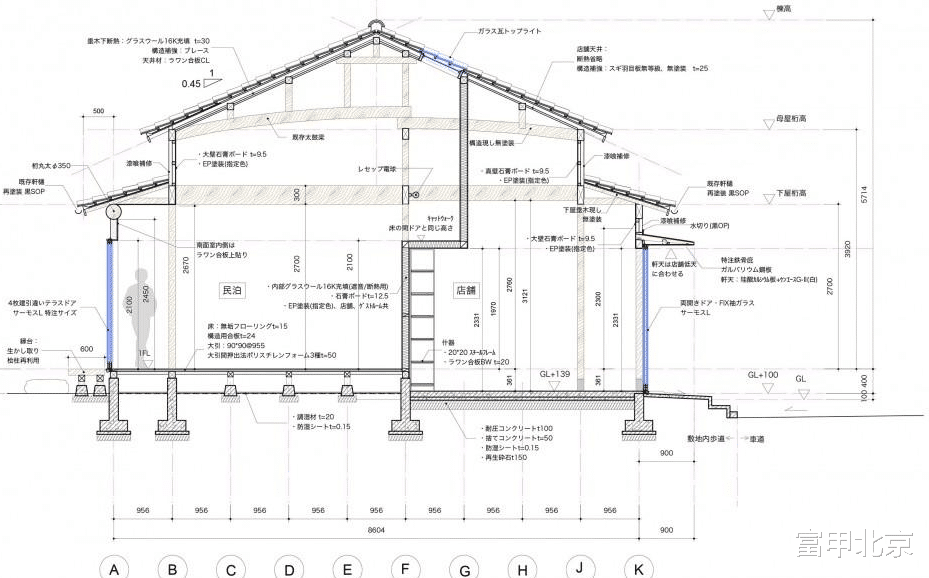夕阳美丽的福间海岸地带,一位是朋友的业主在附近找到了1979年建成的旧房以及土地。项目开始的时候,业主向我咨询能否将这栋旧房改造为兼具商店和民宿的空间。
Near Fukuma Beach, known for its beautiful sunsets, a friend who is also the client found a piece of land with an old house built in 1979. The project began with a consultation on whether this old house could be renovated into a combination shop and guesthouse.
▼外观概览,exterior overview© YASHIRO PHOTO OFFICE

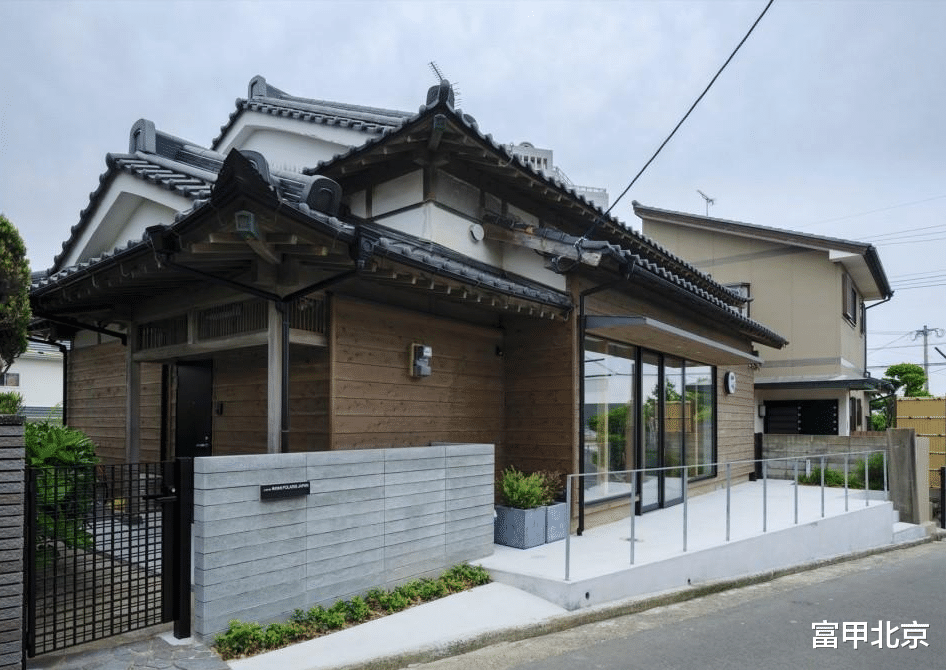

这是一栋木结构建筑,采用了入母屋结构的屋顶。虽然外墙使用了印刷胶合板,屋檐采用了聚碳酸酯波纹板,看起来显得廉价,但从整体结构来看,原本的建筑还是非常坚固的。无节的桧木柱、立派的松木大梁以及长跨度的圆木横梁都给人留下了深刻印象。1979年建成的房屋还不足以被称为古民家,但在这个时期是能以低价买到好材料、普通人也能建造出精美木结构房屋的时代。用自己的思想重新建构,与这些有经验的工匠建造的建筑对话,并复兴其被遗忘的优点,是建筑从业者的使命。
▼轴测爆炸图,exploded axons© TSUTSUMI & ASSOCIATES

The single-story irimoya-style wooden structure had signs of cheap renovations, such as printed plywood exterior walls and polycarbonate corrugated roofing, but the original structure was evidently well-built. The knotless cypress pillars, the impressive large domestic pine beams, and the long-span log girders were truly remarkable. Although 1979 is not old enough to be considered an old folk house, it represented the last era when high-quality materials were still available at affordable prices, allowing ordinary people in rural areas to build well-crafted wooden houses. Even as we reinterpret in our own way, engaging in dialogue with buildings crafted with pride by skilled carpenters and reviving their forgotten excellence is the mission of those involved in architecture.
▼商店空间, shop space© YASHIRO PHOTO OFFICE
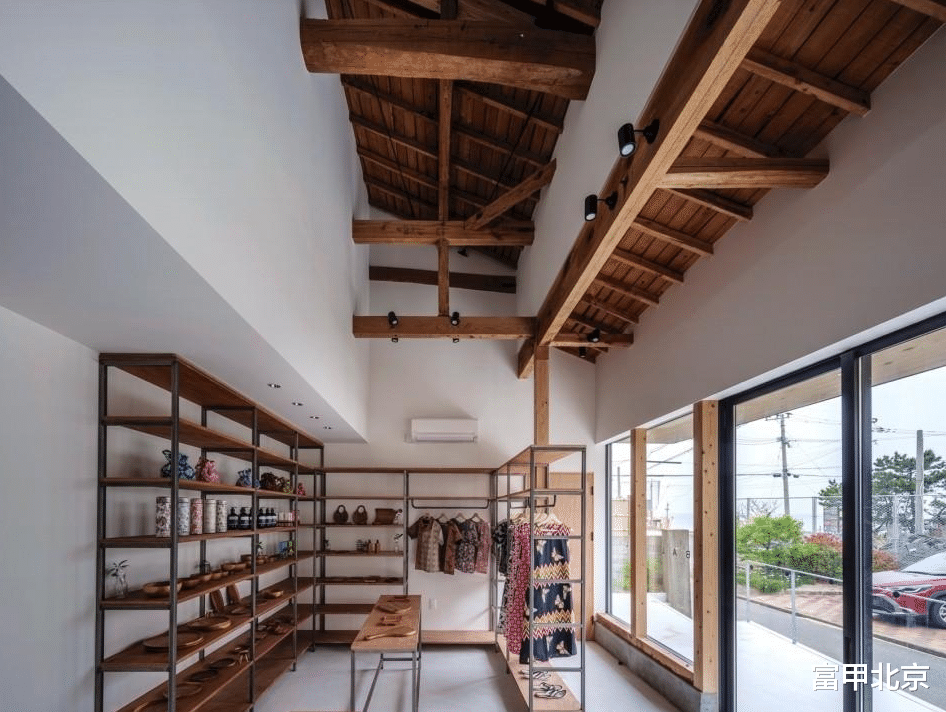
▼商店空间, shop space© YASHIRO PHOTO OFFICE
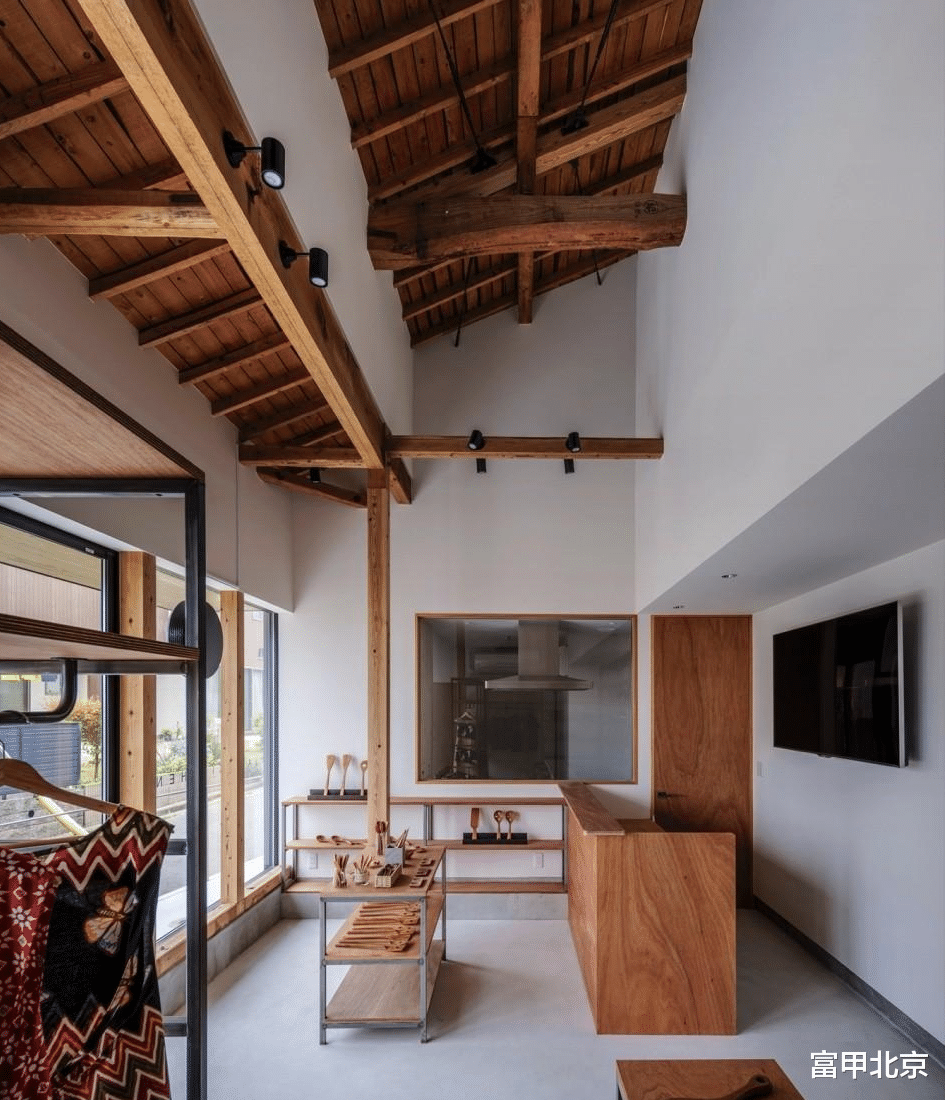
▼柱脚细部,pillars detail© YASHIRO PHOTO OFFICE

商店空间从公路侧进入,民宿空间则使用缩小后原来的入口,移除那些会影响动线和结构的柱子。对于落在地面上的柱子,更换柱脚;在墙体的适当位置增加结构用胶合板,以确保墙体的坚固性。在屋顶板下增加木梁来确保建筑水平稳定性。关于隔热,土墙已经有足够的隔热性能,因此保持现状,新建的墙体内部、住宅部分的屋顶板下采用玻璃棉,地板下则用挤出聚苯乙烯泡沫进行补强。
Access for the shop was planned from the road side. For the guesthouse, the original entrance was used while reducing its size. Pillars that did not affect structural integrity and also interfered with the flow of movement were removed. Pillars that fell into the concrete floor had their bases replaced, and structural plywood was added in necessary locations to ensure the required load-bearing walls. Horizontal rigidity was ensured by securing the rafters with braces. Regarding insulation, it was determined that the earthen walls already provided sufficient insulation performance, so they were maintained as is. New walls and the underside of the roof decking in the residential area were supplemented with glass wool, and the underneath of the flooring was supplemented with extruded polystyrene foam.
▼民宿空间概览,guesthouse space overview© YASHIRO PHOTO OFFICE



▼庭院视野,courtyard view© YASHIRO PHOTO OFFICE

▼在屋顶板下增加木梁,structural plywood was added in necessary locations© YASHIRO PHOTO OFFICE
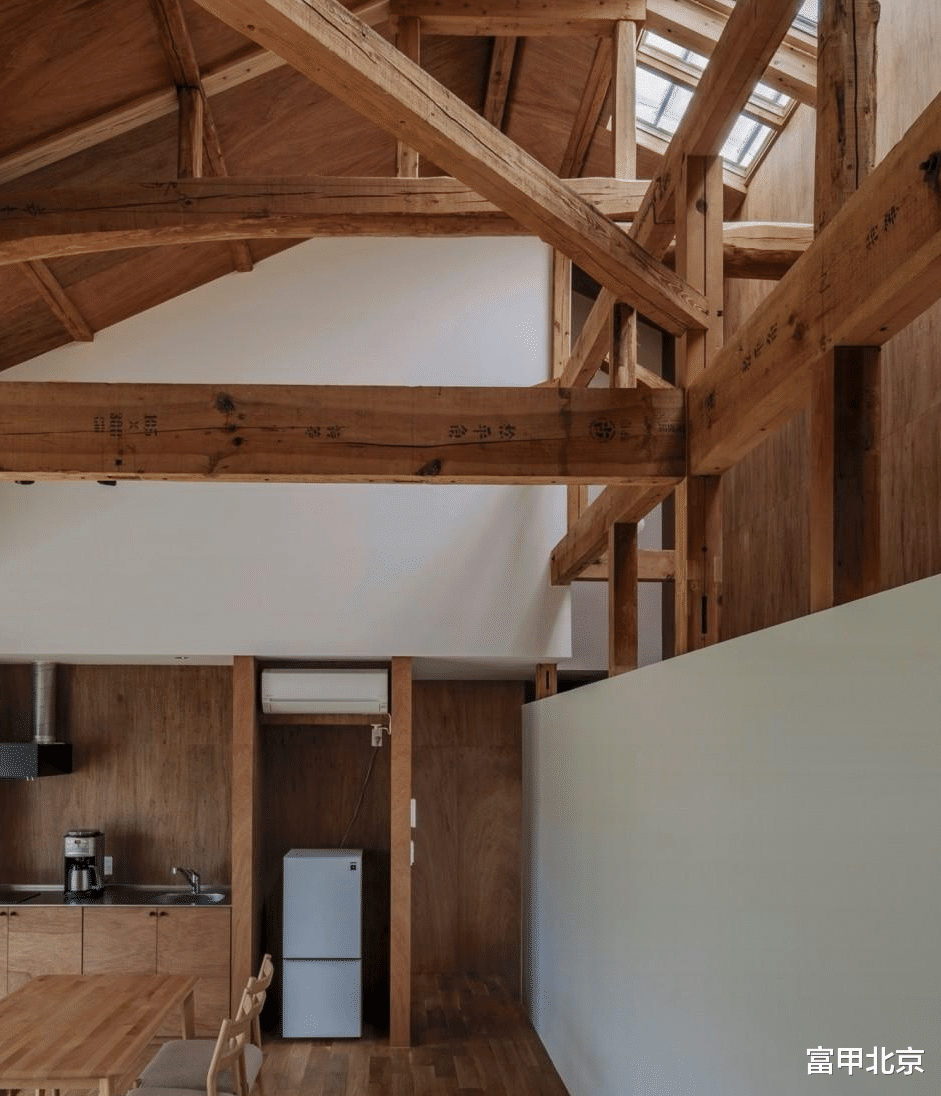
从一开始就考虑拆除天花板,但平房的入母屋屋顶很高,棟木下大约有5.3米高。如果按照道路侧为商店,庭院侧为民宿来规划,那么必然会在棟木平行处设立墙壁。然而,仅用5.3米的墙壁进行分隔,既不能感受到结构之美,也缺乏人性化尺度。因此,将民宿侧的大墙从2.1米高起向商店侧后退。这样,民宿侧形成了2.1米的通高空间,而商店侧的天花板因其下方为地面而适度降低到2.33米,形成适宜高度的天花板。民宿通高空间的柱子裸露出来,并在玻璃瓦顶窗的自然光照射下,美丽地展现出结构之美。
From the beginning, I considered removing the ceiling, but the single-story irimoya roof structure has a high ridge beam. If we planned to have a shop on the road side and a guesthouse on the garden side, a massive wall parallel to the ridge beam would inevitably rise. However, simply dividing the space with a 5.3-meter-high wall would not showcase the beautiful timber frame and, more importantly, lacked a human scale. Therefore, I decided to set back the upper part of the large wall on the guesthouse side, starting from 2.1 meters up, towards the shop side. A 2.1-meter-high catwalk was created on the guesthouse side, while a lowered ceiling naturally emerged on the shop side. The shop had a concrete floor that was lower than the guesthouse floor, resulting in a suitably low ceiling height of 2.33 meters. On the guesthouse side, the pillars are exposed above the catwalk, and the natural light streaming in from the glass roofing tiles beautifully highlights the timber frame.
▼木梁架与天光,wooden beams and skylight© YASHIRO PHOTO OFFICE


▼木结构细部,wooden structure detail© YASHIRO PHOTO OFFICE
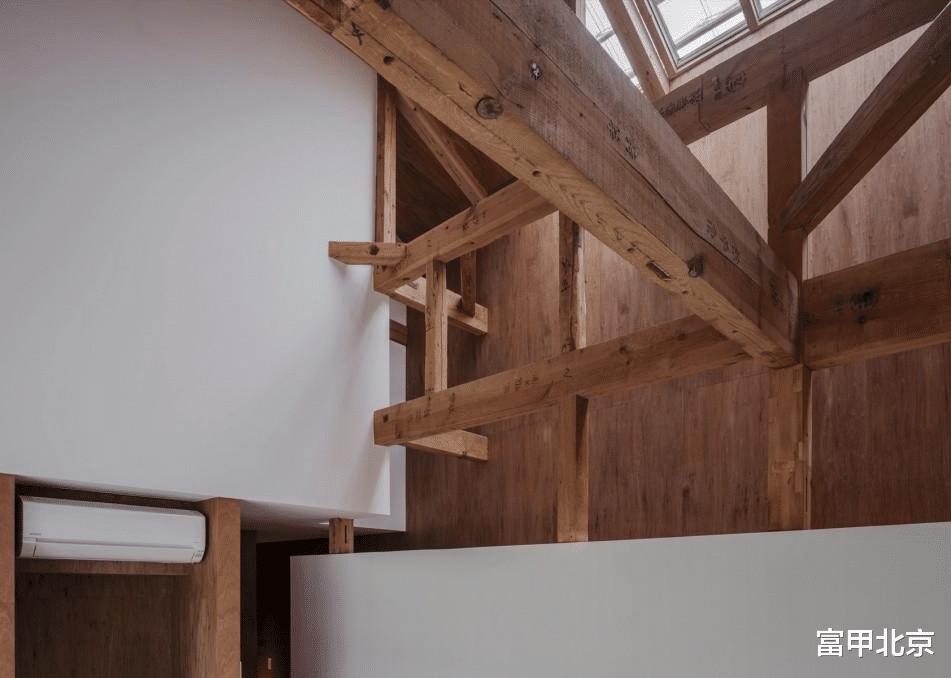
▼夜景室内,inteiror at night© YASHIRO PHOTO OFFICE

▼卧室区域,bendroom area© YASHIRO PHOTO OFFICE


回顾以上内容,实际上是一种反向的思想观念:将原本隐藏在天花板上的结构暴露出来,而将原本显露的内墙隐藏起来。将过去认为隐藏起来才美的动态结构完全展示出来,可能会被过去的工匠认为是不妥的处理,然而正因为在这个贫弱建筑物充斥的时代,我们才希望大胆展示这种充满力量的结构之美。
Reflecting on the approach, it was a rhetorical reversal of negatives and positives: exposing the structure that was once hidden by the ceiling, while concealing the cypress pillars behind a wall that was previously revealed as a half-timbered wall. Revealing what was once considered beautiful only when hidden—such as a dynamic structure—might be seen as shameless by the original carpenters of this house. However, given the prevalence of weak architecture in contemporary times, we find ourselves wanting to fully reveal and celebrate that robust, muscular form.
▼室内灯光, interior lightings© YASHIRO PHOTO OFFICE

▼夜景,night view© YASHIRO PHOTO OFFICE


▼总平面图,site plan© TSUTSUMI & ASSOCIATES

▼平面图,floor plan© TSUTSUMI & ASSOCIATES

▼剖面图,sextion© TSUTSUMI & ASSOCIATES
